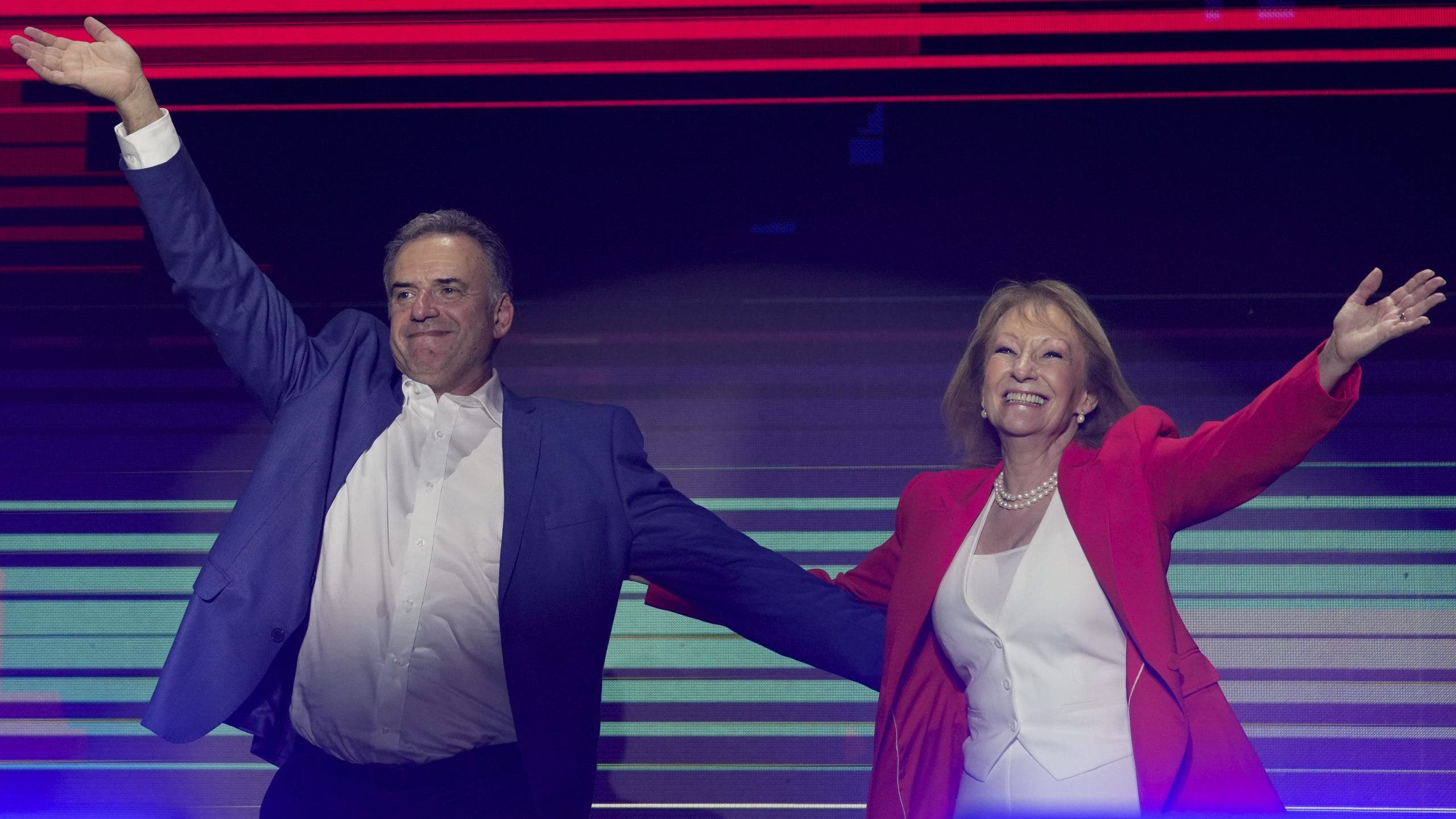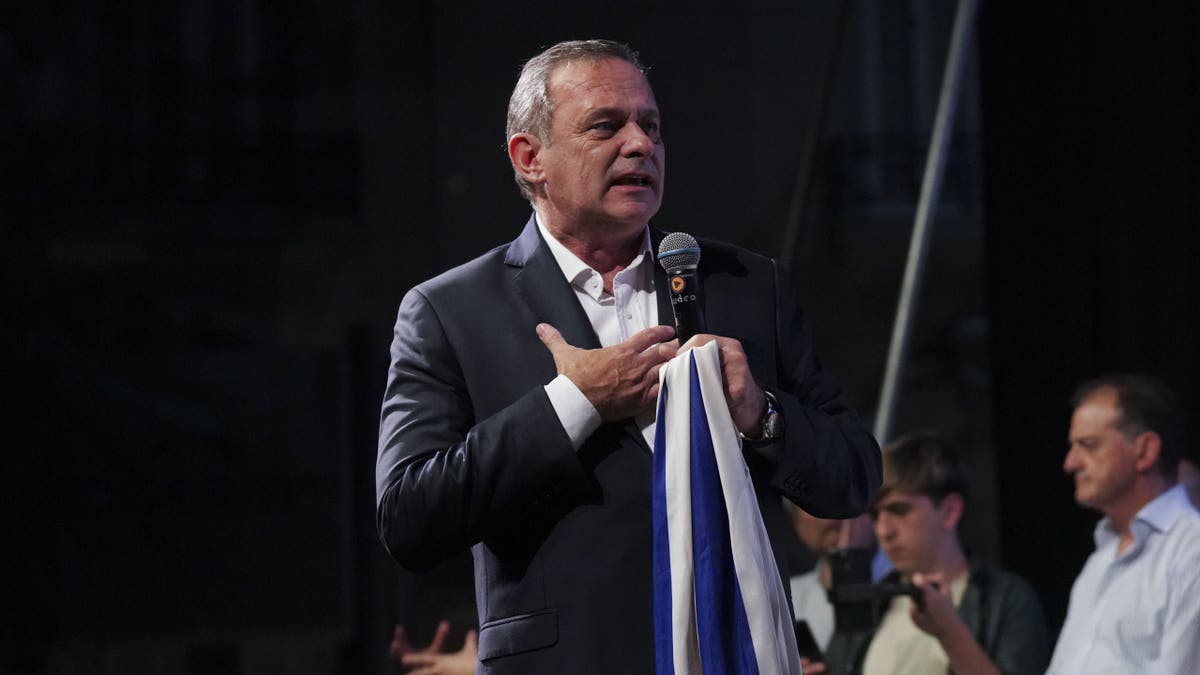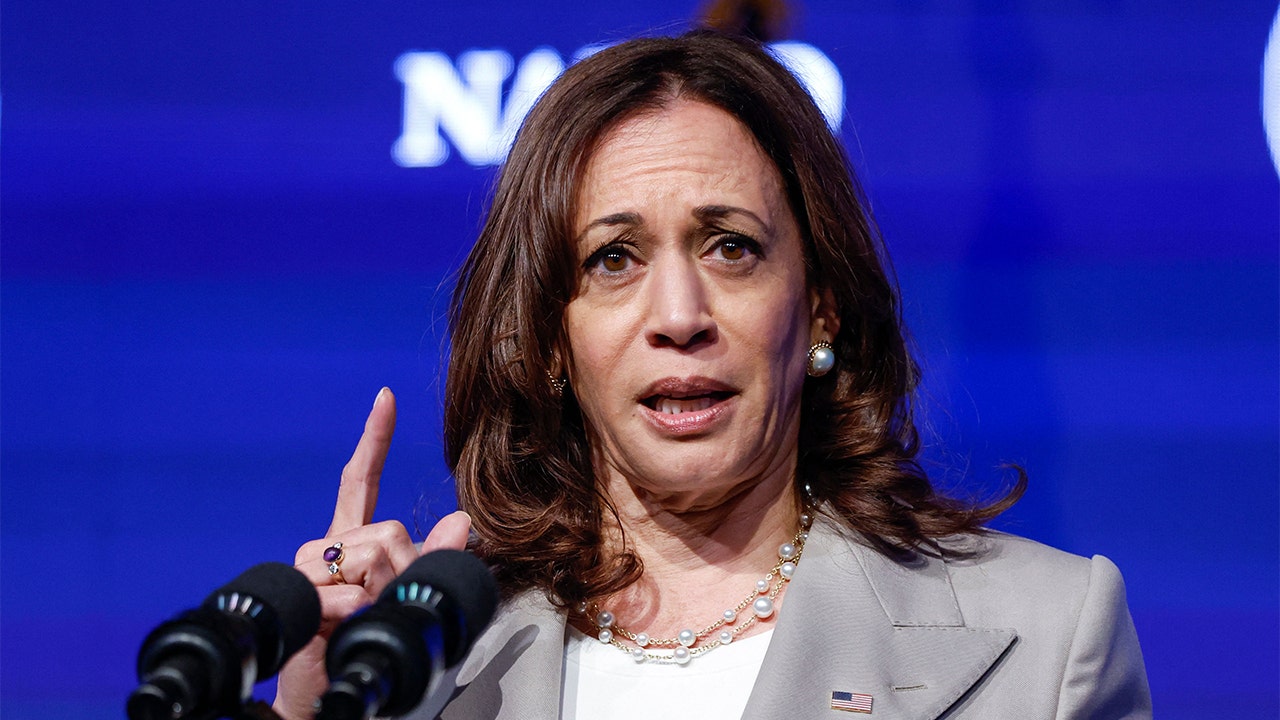World
Petroleum asphalt remains in Yellowstone River, even after cleanup from train derailment

REED POINT, Mont. (AP) — Two months after a railroad bridge collapse sent carloads of hazardous oil products plunging into Montana’s Yellowstone River, the cleanup workers are gone and a mess remains.
Thick mats of tarry petroleum asphalt cover portions of sandbars. Oil-speckled rocks and bushes line the shore along with chunks of yellow sulfur, a component of crude. In the middle of the river downstream of the bridge, a tangle of steel juts out of the water from a ruptured railroad tank car that has not been removed.
The railroad, Montana Rail Link, in conjunction with federal and state officials last week halted most cleanup work and stopped actively looking for more contaminated sites. They said dropping river levels that have been exposing more pollution also make it harder to safely operate the large power boats used by cleanup crews.
Almost half the estimated 48,000 gallons (180,000 liters) of molten petroleum asphalt that spilled has not been recovered, officials said. That includes 450 sites with asphalt in quantities considered too small or too difficult for efficient removal, according to data provided to the Associated Press.
The spill extends more than 125 miles (200 kilometers) along a stretch of the Yellowstone popular among anglers and recreationists and relied on by farmers to irrigate crops. Yellowstone National Park is upstream of the bridge collapse and was not impacted.
The scope of remaining pollution was evident this week when viewed by boat downstream of the collapsed bridge, which has since been repaired. Asphalt could be seen on every river island visited, ranging from globs stuck on riverside vegetation to thick mats of tar oozing across sand bars as summer temperatures heated it into a viscous liquid.
“What we’ve seen out there tells us that there should be a second phase of cleanup. They need to come back and they need to do a better job,” said Wendy Weaver, executive director of Montana Freshwater Partners. The non-profit group focused on water protection has received reports of tar balls and other asphalt at more than 40 sites cleanup workers already passed through.
Elevated levels of a toxic component of oil known as polycyclic aromatic hydrocarbons, or PAHs, have been detected in mountain whitefish downstream of the spill site, prompting an advisory against eating any caught along a 41-mile (66-kilometer) stretch of the Yellowstone. The contamination has not been conclusively linked to the derailment but the asphalt that was spilled contained PAHs, according to documents submitted to federal officials.
Test results on other fish species are pending, said Chrissy Webb with Montana Fish Wildlife and Parks.
Downstream intakes for drinking water and irrigation were temporarily shut down after the spill and have since reopened with no impacts reported.
Asphalt is not as volatile as other oil products such as gasoline or diesel. It emits chemicals toxic to humans and the environment at a slower rate, but also breaks down slowly and can have a more lasting impact, said University of Houston petroleum chemist Ramanan Krishnamoorti.
Asphalt in the water could be especially problematic, he said. It won’t readily set or harden as it typically does after being exposed to air, such as when used in road construction or as roofing material.
“It can be toxic, especially once you let it sit in the environment without it getting really set,” Krishnamoorti said. “It could also get ingested by fish in the water and that could be a massive challenge, because it’s essentially not digestible by most living things so it can sit in the body.”
Federal and state officials cautioned in the days after the derailment that much of the spill would not be recovered and a too-aggressive cleanup risked further harm to the environment. Cleanup crews collected asphalt at 377 sites — along with more than 20 tons of rocks, sand and vegetation that stuck to the asphalt as it began to harden, according to data provided by federal officials.
Montana Rail Link spokesperson Andy Garland said the company was committed to addressing the derailment’s impacts, and decided in coordination with state and federal officials that “a different approach” was needed. He said a local task force will continue to respond to reports about asphalt.
To merit removal the asphalt must cover an area greater than 20 inches (50 centimeters) wide when found in pebbles or rocks, or greater than 6 inches (15 centimeters) in sand.
As recently as Aug. 3, officials anticipated the cleanup work continuing “via boat and land” into fall, according to a planning document approved by the government and railroad. Less than two weeks later, with work slowing as the water dropped, officials said they passed a threshold triggering a wind-down of the cleanup. That threshold was three or fewer sites with contamination deemed extensive enough for removal, over any 10-mile (16-kilometer) stretch of the river.
Crews working downstream reached that point near Custer, Montana, about 136 miles (219 kilometers) from the bridge collapse.
Six tank cars filled with asphalt went in the river during the June 24 derailment along with three cars filled with molten sulfur. Railroad representatives and government officials have declined to say how much sulfur — which is also a petroleum product — was released or how much was cleaned up.
Sulfur is naturally occurring and can give off hazardous gases at high temperatures, but is not considered a threat once it cools and hardens, Krishnamoorti said.
The EPA declined to make anyone available for an interview for this story. Montana Gov. Greg Gianforte’s press secretary, Kaitlin Price, declined to say whether the Republican was satisfied with the cleanup, adding that his priority was protecting public health and the river.
The derailment marked the third large petroleum spill into the Yellowstone in recent years, following ruptures of crude oil pipelines that crossed beneath the river in 2011 near Laurel, Montana, and in 2015 near Glendive. The river has a shifting channel that gets severely scoured during flooding.
The cause of the bridge collapse remains under investigation. It happened following torrential rainfall and at a time when the river was swollen with melting mountain snow.
A follow-up search for asphalt along the river is planned next year and officials said shifting sandbars could reveal more that can be removed. Weaver worries next year’s spring surge of snowmelt could wash the remaining asphalt further downstream or bury it.
“I feel like they’re trying to sweep this under the rug,” she said.

World
Uruguay ousts conservative government, elects leftist opposition candidate as turnout hits 90 percent

Uruguay ousted its conservative government that had been in charge for the past five years, as leftist opposition candidate Yamandú Orsi claimed victory in a tight presidential runoff Sunday.
Even as the vote count continued, Álvaro Delgado, the presidential candidate of the center-right ruling coalition, conceded defeat to his challenger.
“With sadness, but without guilt, we can congratulate the winner,” he told supporters at his campaign headquarters in the capital of Montevideo.
Orsi, 57, a working-class former history teacher and two-time mayor from Uruguay’s Broad Front coalition, was mentored by former President José “Pepe” Mujica, an ex-Marxist guerilla who became world renowned for driving Uruguay’s legalization of abortion, same-sex marriage and sale of marijuana a decade ago. Orsi thanked his supporters as crowds flocked to greet him.
JAVIER MILEI FIRST WORLD LEADER TO MEET WITH PRESIDENT-ELECT TRUMP: ‘GREATEST POLITICAL COMEBACK IN HISTORY’
Yamandu Orsi, candidate for the Broad Front (Frente Amplio) and running mate Carolina Cosse, right, celebrate after polls closed in the presidential run-off election in Montevideo, Uruguay, Sunday, Nov. 24, 2024. (AP Photo/Natacha Pisarenko)
“The country of liberty, equality and fraternity has triumphed once again,” he said, vowing to unite the nation of 3.4 million people after such a tight vote.
“Let’s understand that there is another part of our country who have different feelings today,” he said. “These people will also have to help build a better country. We need them too.”
“I will be the president who calls for national dialogue again and again, who builds a more integrated society and country,” Orsi said.
“Starting tomorrow, I’ll have to work very hard, there’s a lot to do,” he told the Associated Press from the glass-walled NH Columbia hotel, thronged friends and colleagues embracing and congratulating him.
With nearly all the votes counted, electoral officials reported that Orsi won just over 49% of the vote, ahead of Delgado’s 46%. The rest cast blank votes or abstained in defiance of Uruguay’s enforced compulsory voting. Turnout reached almost 90%.
After weeks in which the rivals appeared tied in the polls, Delgado’s concession ushers in Orsi as Uruguay’s new leader and cuts short the center-right Republican coalition’s shot at governing.

Alvaro Delgado, presidential candidate for the ruling National Party, concedes defeat in Montevideo, Uruguay, Sunday, Nov. 24, 2024. (AP Photo/Matilde Campodonico)
The 2019 election of President Luis Lacalle Pou spelled an end to 15 consecutive years of rule by the Broad Front.
“I called Yamandú Orsi to congratulate him as President-elect of our country,” Lacalle Pou wrote on social media platform X, adding that he would “put myself at his service and begin the transition as soon as I deem it appropriate.”
Orsi’s victory made the South American country the latest to rebuke the incumbent party in the wake of post-pandemic economic malaise.
The win contrasts with that of populist Javier Milei, who won the presidency in Argentina in 2023 by promising to overhaul the establishment to deal with soaring inflation and poverty. Milei reportedly has grown close to President-elect Trump.
Orsi has been described as a moderate with no radical plans for change. He largely agrees with his opponent on key voter concerns like driving down the childhood poverty rate, now at a staggering 25%, and containing an upsurge in organized crime that has shaken the nation long considered among Latin America’s safest.
ARGENTINA’S MILEI BLASTS UN OVER SUPPORT FOR COVID LOCKDOWNS, APPEASING ‘BLOODY DICTATORSHIPS’
Despite Orsi’s promise to lead a “new left” in Uruguay, his platform resembles the mix of market-friendly policies and welfare programs that characterized the Broad Front’s tenure from 2005-2020.
Mujica, now 89 and recovering from esophageal cancer, turned up at his local polling station before balloting even began on Sunday to praise Orsi’s humility and Uruguay’s proud stability.
“This is no small feat,” he said of his nation’s “citizenry that respects formal institutions.”
With inflation easing, and the economy expected to expand by some 3.2% this year, Delgado had promised to continue pursuing his predecessor’s pro-business policies.

Supporters of the Broad Front (Frente Amplio) celebrate the victory of candidate Yamandú Orsi in Montevideo, Uruguay, Sunday, Nov. 24, 2024. (AP Photo/Matilde Campodonico)
Lacalle Pou, who constitutionally cannot run for a second consecutive term, has enjoyed high approval ratings. But the official results trickling in on Sunday showed that mounting complaints in Uruguay about years of sluggish economic growth, stagnant wages and the government’s struggle to contain crime after five years helped swing the election against Delgado.
Specific proposals by Orsi include tax incentives to lure investment and revitalize the critical agricultural sector, as well as social security reforms that would lower the retirement age but fall short of a radical overhaul sought by Uruguay’s unions that failed to pass in the Oct. 27 general election during which neither front-runner secured an outright majority.
He is also likely to put an end to a trade agreement with China that Lacalle Pou had pursued to the chagrin of Mercosur, an alliance of South American nations promoting regional commerce.
His government will take office on March 1, 2025.
The Associated Press contributed to this report.
World
Scholz gets SPD's chancellor candidate nod after weeks of doubt

Germany’s centre-left Social Democracts have chosen to officially nominate current Chancellor Olaf Scholz as their party’s candidate despite his low approval ratings.
Olaf Scholz has been officially nominated by his Social Democratic Party (SPD) as its candidate for German chancellor in snap elections set for 23 February.
The incumbent chancellor’s nomination comes after weeks of tense discussions within the centre-left party over whether he was the right person for the job.
Some members of his party rallied around Defence Minister Boris Pistorius — who enjoys higher approval ratings — as a replacement for Scholz.
On Thursday, Pistorius said he was not “available” to run for chancellor, paving the way for Scholz to be at the top of the party’s ballot.
The SPD’s executive committee officially nominated Scholz on Monday, with Pistorius one of the 33 senior members of the party with the right to vote on the matter.
According to a recent poll by public broadcaster ZDF last week, only 37% of respondents thought Scholz was doing a good job in his current role as chancellor.
A separate survey showed a large majority (78%) thought the SPD would achieve a better result in February’s upcoming election with Pistorius as the candidate for chancellor. Only 11% said they thought the SPD would achieve victory in the election under Scholz.
Internal wrangling
At a meeting of SPD’s official youth branch this weekend, the party’s top was accused of leading the party to a disaster.
Two weeks of internal discussions over who should be the candidate have left their mark, according to younger members of the party.
One of the party’s leaders, Saskia Esken, said at a press conference that the party wasn’t portraying “a good picture in the nomination of our chancellor candidate.”
Scholz’s ruling “streetlight” coalition, which was comprised of the SPD, the Greens, and the liberal Free Democratic Party (FDP), collapsed earlier this month in public fashion after Scholz fired his Finance Minister Christian Lindner, who hails from the liberal centrist FDP.
Lacking a parliamentary majority, Scholz agreed to hold a no-confidence vote on 16 December, with general elections set for 23 February 2025.
Currently, the centre-right Christian Democratic Union (CDU) is leading in the polls with 32%. They have chosen Friedrich Merz as their candidate for chancellor.
The environmentalist Greens party picked Robert Habeck as their top choice, while the far-right Alternative for Germany (AfD) named Alice Weidel, which was the first time the party had nominated an official chancellor candidate.
World
Trump's FDA Pick Is Surgeon and Writer Martin Makary
-

 Business1 week ago
Business1 week agoColumn: Molly White's message for journalists going freelance — be ready for the pitfalls
-

 Science5 days ago
Science5 days agoTrump nominates Dr. Oz to head Medicare and Medicaid and help take on 'illness industrial complex'
-

 Politics1 week ago
Politics1 week agoTrump taps FCC member Brendan Carr to lead agency: 'Warrior for Free Speech'
-
/cdn.vox-cdn.com/uploads/chorus_asset/file/25739950/247386_Elon_Musk_Open_AI_CVirginia.jpg)
/cdn.vox-cdn.com/uploads/chorus_asset/file/25739950/247386_Elon_Musk_Open_AI_CVirginia.jpg) Technology7 days ago
Technology7 days agoInside Elon Musk’s messy breakup with OpenAI
-

 Lifestyle1 week ago
Lifestyle1 week agoSome in the U.S. farm industry are alarmed by Trump's embrace of RFK Jr. and tariffs
-

 World1 week ago
World1 week agoProtesters in Slovakia rally against Robert Fico’s populist government
-

 News1 week ago
News1 week agoThey disagree about a lot, but these singers figure out how to stay in harmony
-

 Health2 days ago
Health2 days agoHoliday gatherings can lead to stress eating: Try these 5 tips to control it
















